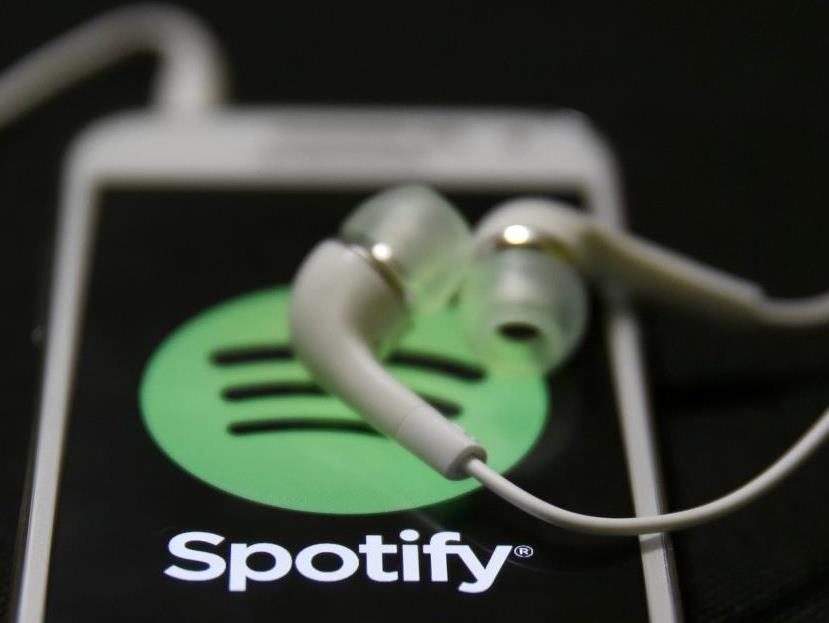Image via Flickr CC
Once upon a time (not that long ago), people bought their favourite music on records made from shellac. Then came vinyl records, music cassettes, CDs, and mini-discs, until music went digital and relieved us of our bulky cases of cassettes and towers of CDs.
Now buying music in any form has been replaced by online streaming through services such as Spotify, Pandora and Apple Music. The growth is staggering. In the US last year more songs were streamed on an average day than were downloaded in the entire year. On average, 1.2 billion songs were streamed each day, while 734 million songs were bought and downloaded across the year.
The growth of streaming has obvious advantages for the consumer: music is cheaper and more accessible than ever. But what does it mean for the artist?
Small margins, big profits
On the face of it, streaming models do not offer a tempting financial proposition income to artists. Songs on Spotify earn an average of $0.0016 each. By comparison a self-distributed CD sale earns an independent artist about $10.
But the sheer number of users – more than 200 million people use streaming services worldwide – means that, if you can garner a following, the earning potential of streaming is much more than in traditional physical media.
At last year’s BigSound conference Jaddan Comerford, founder of indie label Unified, cited the example of an Australian band that made $70,000 from streaming services in 2016.
The band – which does not wish to be named – has seen exponential growth since it caught on with streamers. Comerford said the band’s sales had remained stable on physical media but had increased from $81 to $70,000 a year in five years.
‘Please don’t get caught up in the “I’m only making x cents from x streams.” This is real. This is real money in bands’ bank accounts, and there’s more where that came from,’ Comerford said..
‘If you sell a CD, a download or a vinyl, it makes you money once. If you sell a song or a catalogue of songs that people listen to consistently, then you will make money forever.’
Getting attention
Making money from streaming is a marathon, not a sprint. In order for it to work, it must be part of a multi-pronged approach to making money from your music.
Successful artists sign up for as multiple streaming services , through a digital music distribution platform such as TuneCore or CD Baby, which makes it easy to distribute music to iTunes, Amazon Music, Spotify, Google Play, and more for an annual, flat fee. Artists keep 100 % of the sales revenue and rights.
Read: Spotify in review (battle of the streamers)
A large part of making money from streaming services is getting your music listed on a featured playlist. These ready-made playlists are curated by streaming services for every conceivable genre, activity, or mood. The playlists help users inundated by a catalogue of more than 30 million songs navigate the system. They are an important discovery tool, the 21st century equivalent to getting playtime on radio.
Spotify, the largest streaming platform, hires 50 full-time human curators, who manage the 4,500 playlists on the service. Getting your song listed on a popular playlist can lead to millions of plays, and a financial windfall for a musician.
‘Playlists have become powerful tools for music discovery and impact,’ said David Sheils, director of media licensing at APRA AMCOS.. ‘Artists who can capture the attention of curators and land a spot on prominent playlists are in a good position to make money – not just from streaming, but from the flow-on to other revenue sources. As an example, a songwriter that fares well on a streaming service may be picked up for play by radio, and in turn receive broadcast royalties.’
Sheils would like to see more attention paid to supporting local artists through the playlist system.
‘To give local music creators a boost, there needs to be a concerted effort by streaming service providers to program Australasian content in their playlists – globally,’ he said.
A bigger cut for artists
Read: The truth about streaming
Like many other industries, the music industry is scrambling to keep up with increasing technological and digital changes.
A key difference in streaming is that it cuts out the middleman, removing or lessening the role of the record label, which traditionally takes a significant cut of the artist’s profits. With streaming, independent labels and artists can access their profits directly.
Music licensing and royalty agency APRA| AMCOS is increasingly focused in the streaming space. It has licensing agreements in place with all streaming services including Spotify, Apple Music, Google Play, YouTube and SoundCloud.
Last year revenue from streaming in Australia grew by 140% to $27.4 million – in line with global markets. Global digital music revenue in 2016 was $8.8 billion, a 10.2 % increase from 2015.
‘Ever since CDs knocked vinyl from its perch back in the 1990s, the music publishing industry has been evolving at a vertiginous rate,’ said Norman Morris, Industry Communications Director at Roy Morgan Research. ‘While record stores still exist (and vinyl is making a comeback), online shopping changed the face of music retail just as it did many other retail categories.’
‘But now, things are changing once more. The online space remains as crucial as ever to our music consumption, but the advent of streaming – whether free (radio station apps) or by subscription (Apple Music) – has impacted sales of downloads and CDs,’ said Morris.
Comerford told ArtsHub that artists need to look carefully at whether or not signing with a label will maximise their profits. ‘They need to be aware of the deal they are signing with a label. Or they need to look at independent options.
‘That doesn’t mean don’t sign with labels. Labels bring a lot of value with investment, marketing, promotion and strategy. You could go alone and make 100% of revenue, but most times, 100% of zero is nothing. So it often pays to find a good partner to help you grow.’
Artists are owed second royalty whenever their original composition is sold, downloaded, streamed, or publicly performed, but they need a music publishing administrator to collect the second royalty. Platforms like TuneCore will collect and distribute any of the 13 royalties you may be eligible for, while digital rights agency Merlin can negotiate deals with digital services to further benefit the music creator.
Paid subscriptions are key
Not all streaming opportunities are equal. Advertising-supported streaming services offer artists significantly less profit than subscription services such as Spotify Premium or YouTube Red.
But there’s a long way to go in achieving a paid service mindset among users. Among Spotify’s 100 million users, only 30% pay for the Premium tier.
‘While revenue from streaming is clearly growing, it’s not keeping pace with the growth in use of music – often referred to as the ‘value gap’ – and this presents new challenges for the music industry. Despite huge numbers of consumers accessing ad-supported streaming, the revenue generated is minuscule when compared with subscription streaming,’ said Sheils.
‘Streaming services have the potential to benefit all copyright holders. They provide legal access to a vast repertoire of songs, and give consumers the opportunity to discover new music. The challenge lies in addressing the gap that exists between consumption and compensation. The value of music needs to be fully realised to provide an equitable playing field for all.’
Less piracy, more music
In the past year the number of songs available through streaming has more than doubled and the access has proved the adage people will pay for music if you make it easy.
A European Commission study found increased streaming access reduces illegal downloading, as well as the buying of legal downloads.
But the statistic most likely to cheer the hearts of artists is that more people are listening to more music. While physical album sales were down 11.7%, overall music consumption increased by 4.9 % in 2016 in the US, a figure indicative of international trends. Music is becoming more accessible than ever before, as streaming services offer music lovers a much wider selection of music at their fingertips.
‘We still have a long way to go, I really think we need to start realising that streaming is not the devil, it is the future,’ said Comerford. ‘Not only are artists being discovered in every corner of the globe through playlists, and other marketing mechanisms, but we are getting paid.’






